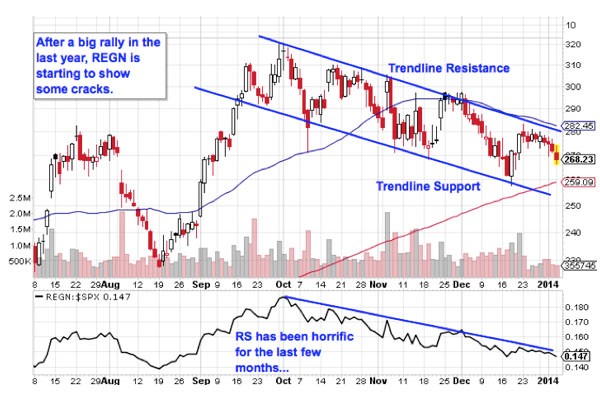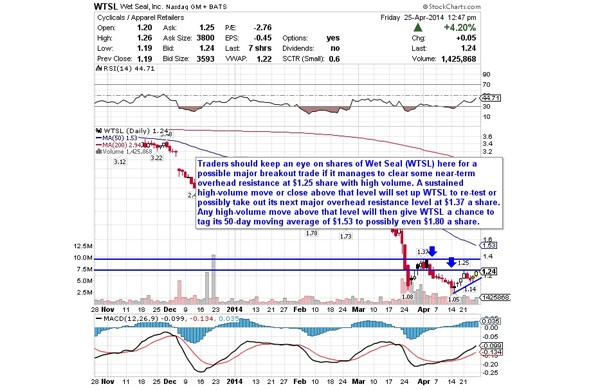5 Dogs of the Dow to Buy in 2014 Stockpickr! Your Source for Stock Ideas
Post on: 16 Апрель, 2015 No Comment

By Jonas Elmerraji
Senior Contributor
12/30/13 — 09:13 AM EDT
BALTIMORE (Stockpickr ) — The Dow Jones Industrial Average has been getting the short end of the stick in 2013. With the blue chip stock index trailing the S&P 500 350 basis points, it’s the less exciting of the big indexes, despite the stuffy old Dow being up 25.7% since the first session of the year.
>>5 Stocks Under $10 Set to Soar
But even though the Dow is trailing, it’s still been posting some impressive numbers: More than half of the 30 stocks that make up the Dow are up more than 30% in 2013. So much for boring blue chips.
Better yet, the Dow could hold the keys to even more gains in 2014. All you have to do is look for the dogs.
The Dogs of the Dow is a strategy that’s built around simply buying the ten highest-yielding Dow Jones Industrial Average stocks, rebalancing once a year, and holding on. Because yield is inversely related to performance, these big names tend to be late bloomers out of the big index’s 30 names. So, should you be buying the dogs as the calendar flips over to 2014?
>>5 Stocks With Big Insider Buying
In a nutshell, the Dogs of the Dow strategy works exceptionally well in bull markets, and a whole lot less well when the market is showing signs of weakness. But as far as I’m concerned, it’s pretty clear that we’re in the early stages of a secular bull right now.
That doesn’t mean that you should buy the textbook version of this strategy. With only 30 blue chip stocks in the index, diversification is a real problem — after all, the super-high-yields are contained within a couple of industries. But limit your industry overlap, and this approach starts to look a little more interesting.
In fact, my own research shows that paring down the Dogs of the Dow to a more concentrated portfolio of five stocks, rather than ten, has delivered some stellar outperformance in the last decade without ramping up the risk. So today, we’ll take a closer look at five Dogs of the Dow stocks .
>>5 Dividend Stocks Ready to Pay You More in 2014
First up is AT&T (T ), the $185 billion communications stock that’s been the highest-yielding Dow component for quite a while now. At current prices, AT&T boasts a hefty 5.23% yield. But it’s the firm’s recent indirect valuation boost that gives this communications giant the biggest upside potential in 2014.
AT&T’s valuation boost comes from the unlikeliest of places: its biggest rival. In short, Verizon is overpaying considerably to obtain complete ownership of its wireless unit from Vodafone in early 2014. Basically, the firm is shelling out $130 billion for the 45 million customers that fall into VOD’s share of the business — at the same time, AT&T’s 95 million customers and entire fixed line business is being valued by the market at just $180 billion. That’s an insane mispricing, and it still hasn’t been worked into share prices months later.
The AT&T of today is still largely the end result of the firm’s deal to be the launch carrier for the iPhone. Around 40% of T’s customers are still iPhone users, a customer base that’s replete with much bigger margins from add-on services such as data. But AT&T is about more than wireless — the firm is also one of the biggest fixed-line utilities in the country, powering some 30 million land lines, 16 million internet accounts, and 5 million TV accounts. That combination of businesses gives AT&T some big cross-selling opportunities, and it also throws off a lot of cash.
With shares looking cheap relative to their slightly larger rival, now’s the time to buy this high-yield Dow name.
It’s easy to forget that chipmaker Intel (INTC ) hasn’t always been a dividend stock — the firm didn’t break the 1% barrier until 2005. Since then, though, it’s established itself as one of the best payouts in the tech sector — at last count, Intel’s yield weighs in at 3.52%, good enough to give it Dog status as we head into 2014.
Intel owns around 80% of the global microprocessor business, manufacturing the brains behind the vast majority of computers coming off of assembly lines. So while the firm’s PC-builder customers are seeing their margins get commoditized away, Intel continues to take home net margins deep in the double-digits. As mobile devices like tablets continue to take away share from conventional PCs, Intel is working hard to take a bigger share of that market too — its Atom chips have done a good job of scaling down the power consumption of its prime-time chips without sacrificing too much on the speed side. As consumers continue to demand more from their mobile devices, the cost premium that Intel commands will continue to be easier to swallow.
Part of Intel’s dominance comes from its facilities. Intel owns the most advanced chip foundries in the world, laying claim to manufacturing capabilities that rivals just don’t have. Intel sports a solid balance sheet, with more than $16.2 billion in net cash — enough to convert its already trim P/E ratio of 13.8 into a downright cheap 12 ex-cash. You don’t need the processing power of one of Intel’s newest chips to see that’s a bargain.
Fast food giant McDonald’s (MCD ) has been a laggard in 2013. While its 10% rally would look impressive almost any other year, it’s been anemic this year, as the big indexes have churned out more than twice the performance since the calendar flipped over to January. But the golden arches could be getting ready to make up some lost ground.
McDonald’s is the biggest name in fast food, with more than 34,900 restaurants spread across 120 countries. MCD isn’t a typical restaurant business — the vast majority of its locations are franchised, and the firm even owns the land underneath many of those franchised locations. Those factors give McDonald’s more in common with a REIT than with the diner down the street. In recent years, the firm has made efforts to move its menus upmarket with more healthy options and amenities like in-store WiFi.

While those efforts have helped move McDonald’s up the food chain a bit, the firm’s real growth potential comes from emerging markets, where the chain enjoys a much more appealing image with a growing population of middle class consumers. MCD’s unique business model should keep shoveling income to investors in 2014 — at present, this Dow Dog’s quarterly dividend payout works out to a 3.34% yield.
With more than 2.6 million barrels of oil equivalent coming out of the ground each day, oil and gas supermajor Chevron (CVX ) weighs in as one of the biggest energy stocks on the planet. In a time when other oil companies have been disassembling themselves, Chevron has been basking in its vertical integration, with a very active downstream business that’s restructured to be more profitable than ever.
Chevron owns a collection of some very attractive assets. Currently, the firm’s balance sheet boasts more than 11.3 billion barrels of proven reserves split between oil and gas. Recent investments in LNG should help unlock some growth potential, something that’s often quite difficult for a supermajor to accomplish. Even though prolonged high oil prices have brought new (formerly untenable) projects back online, CVX has done a pretty good job of avoiding costly projects that could become capital wasters if crude prices fall again.
From a financial standpoint, Chevron is arguably the best big energy name out there. The firm carries $25.6 billion in net cash and investments on its books, enough to knock out around 10% of its current market capitalization at current price levels. With a P/E ratio of 10.2 and a 3.19% dividend yield, this energy giant looks cheap right now, even when compared to bargain-priced peers.
Cisco Systems
Cisco Systems (CSCO ) is another name that’s new to the Dogs of the Dow list, if only because the firm only initiated its own dividend in 2011, just two years after the firm joined the Dow. The dividend may be new for shareholders, but management wasn’t shy about it; at current levels, Cisco’s payout adds up to a 3.09% yield. That’s good enough to give CSCO the number-five spot on our list.
Cisco is the biggest name in the IP networking business. The firm’s switches and routers are found in most server rooms across the globe, and there’s a good chance that the firm’s products had a hand in putting these pages on your screen. Cisco’s dominant share provides some big advantages for the firm going forward too. Because Cisco’s gear is designed to plug-and-play with other Cisco components, IT departments that buy Cisco products can often see much lower integration and ongoing technical support costs. That gives Cisco an important economic moat right now, even if competition is trying to move in on its business. As corporate IT departments expand their infrastructure to cope with increasing data consumption, Cisco should benefit.
Here again, Cisco is a good example of a high margin business with a big economic moat and lots of cash on its balance sheet. Net of debt, the firm’s cash position weighs in at $32.8 billion — that’s enough for CSCO to buy back nearly a third of its outstanding shares at current prices, or enough to knock the firm’s ex-cash P/E ratio to a measly 7.9. Investors searching for a bargain in the tech sector should give this Dow Dog a closer look.
To see these stocks in action, check out the Dogs of the Dow portfolio on Stockpickr.
— Written by Jonas Elmerraji in Baltimore.
>>4 Stocks Spiking on Big Volume














